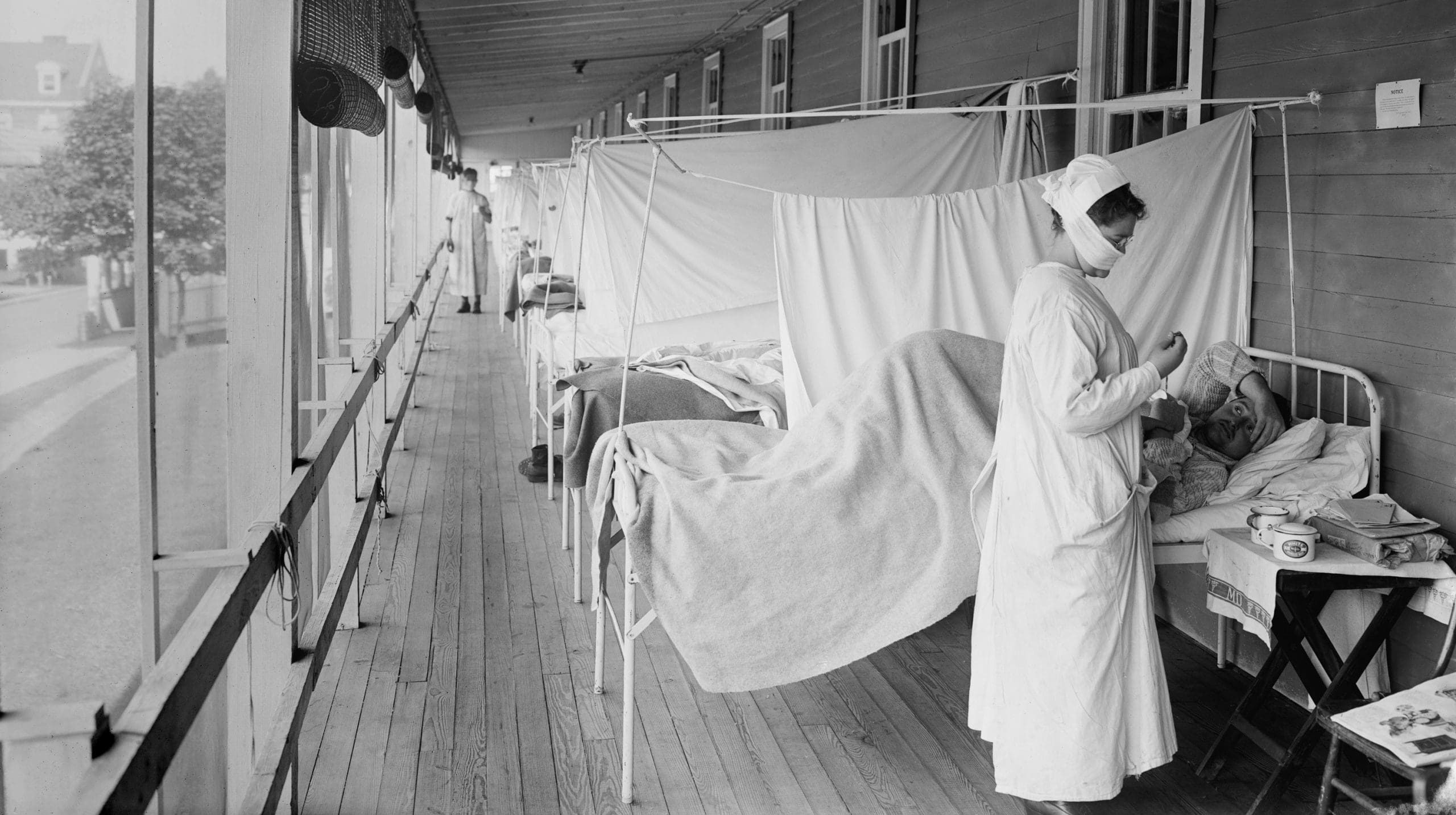The Spanish Flu and COVID-19 pandemics create some interesting parallels.
Separated by almost exactly 100 years, each struck fear and apprehension in the hearts of people the world over.
The influenza pandemic — commonly known as Spanish flu — and the ongoing COVID-19 pandemic are not one and the same as viruses, but the means by which they spread, and the overall reactions of society display some common features.
Localized outbreak that moves quickly
The so-called Spanish Flu actually started at Camp Funston in rural Haskell County, Kansas in 1918, spreading rapidly through a U.S. Army camp and reached New York City within days – perhaps not remarkable by 21st century standards, but a fast rate of travel in the early 20th century.
Nursing care plan for outpatients with mild-to-moderate COVID-19 disease
In the case of COVID-19, timelines of first infections, community transmission, and spread remain widely debated – but the first hospitalizations occurred in Wuhan, China on or around December 8, 2019, and most agree the virus arrived in Western nations (United, States, Italy) shortly after the start by 2020. By mid-March 2020, the virus and fear of transmission affected daily living activities around the world.
Initially downplayed by authorities
In 1918, World War I was winding down, and the participating countries went to great lengths to suppress news of the spreading virus. In fact, the name ‘Spanish Flu’ came about as a result of Spain’s government being one of the few to openly report on infections and spread of the virus.
100 years later, the first two months of the COVID-19 virus’ presence here in the United States was met with restrictions on travels from China, and a public health emergency declared on January 31, 2020. However, most experts believe testing, preparation of the healthcare system, and other considerations were slow to develop until declaration of a national emergency on March 13.
Masks and social distancing
Those people living in the time of the Spanish Flu rapidly divided into two camps – those eager to take measures to slow the spread of disease, and those reluctant to do so due to a perceived impairment of civil liberties, an argument familiar in our own time.
One difference is while people in the 21st century connect such debates to political affiliation, in the time of the Spanish Flu the main arguments against masks were alarming unsuspecting bystanders (people would identify a mask-wearing individual as infected with flu) and an impediment against smoking, a far more common habit 100 years ago than now.
But there were commonalities, such as the formation of an anti-mask league in San Francisco, and a fundraiser held against doctors’ orders in Philadelphia that contributed to more than 12,000 deaths, Meanwhile, other cities closed schools, churches, and restricted large gatherings, and as a result saw much lower death rates.
Devastating second (and third and fourth) waves
Ultimately, the first wave of Spanish Flu was relatively mild in terms of deaths. But the second wave of influenza took place in the late summer/early fall of 1918, largely the result of troops moving about the globe as the war wound down. This wave impacted North, South, and Central America, moving throughout Europe, then Asia and Africa and resulting in an estimated 35 million deaths – about 70 percent of the pandemic’s total.
Subsequent waves – not as severe as the second wave, but more devastating than the initial outbreak – followed in 1919 and 1920 before the virus lessened in severity, beginning the status we now know as seasonal flu. In all, most historians recognize four distinct waves of Spanish Flu.
There are debates whether the ongoing Omicron variant represents the fourth or fifth wave of COVID-19, and it’s much too early to ‘rank’ each wave of COVID in terms of severity. However, Omicron has coincided with a heightened discussion of COVID-19 reaching endemic status and lessening in severity sometime in 2022.
Statistics
This is the hardest point to compare due to differences in world population from 100 years ago and the ongoing nature of COVID-19. From 1918–1920, over 500 million people, or about 30 percent of the world’s population, were infected with Spanish Flu, resulting in approximately 50 million deaths. This means Spanish Flu killed about 3.5% of the world’s population. 650,000 deaths occurred in the United States alone.
While the COVID-19 pandemic continues, thus far the numbers aren’t as devastating in the sense of its toll on the worldwide population. As of January 17, COVID-19 has killed over 800,000 Americans – more than the Spanish Flu – but worldwide deaths are around 5.5 million. A full century’s worth of medical progress has allowed the vast majority of people infected with COVID-19 to recover particularly here in the United States, where the tireless work of nurses and other healthcare professionals has the country approaching a documented 99 percent survival rate in confirmed cases.
For further information on the ongoing COVID-19 pandemic, visit our 2022 COVID Resource Center!
References
British Medical Journal. COVID-19: a comparison to the 1918 influenza and how we can defeat it. COVID-19: a comparison to the 1918 influenza and how we can defeat it | Postgraduate Medical Journal (bmj.com)
Colby News. Minus the War. COVID-19 Pandemic Similarities to the 1918 Spanish Flu – Colby News
Statistics taken from the Centers for Disease Control and Prevention, World Health Organization.



















1 Comment. Leave new
Tuesday, 16 September 2008 02:46 UK: The body of an aristocrat who died nearly 90 years ago has been exhumed in the hope that it will help scientists combat a future flu pandemic.
http://news.bbc.co.uk/2/hi/uk_news/england/humber/7617968.stm
And there you have it.